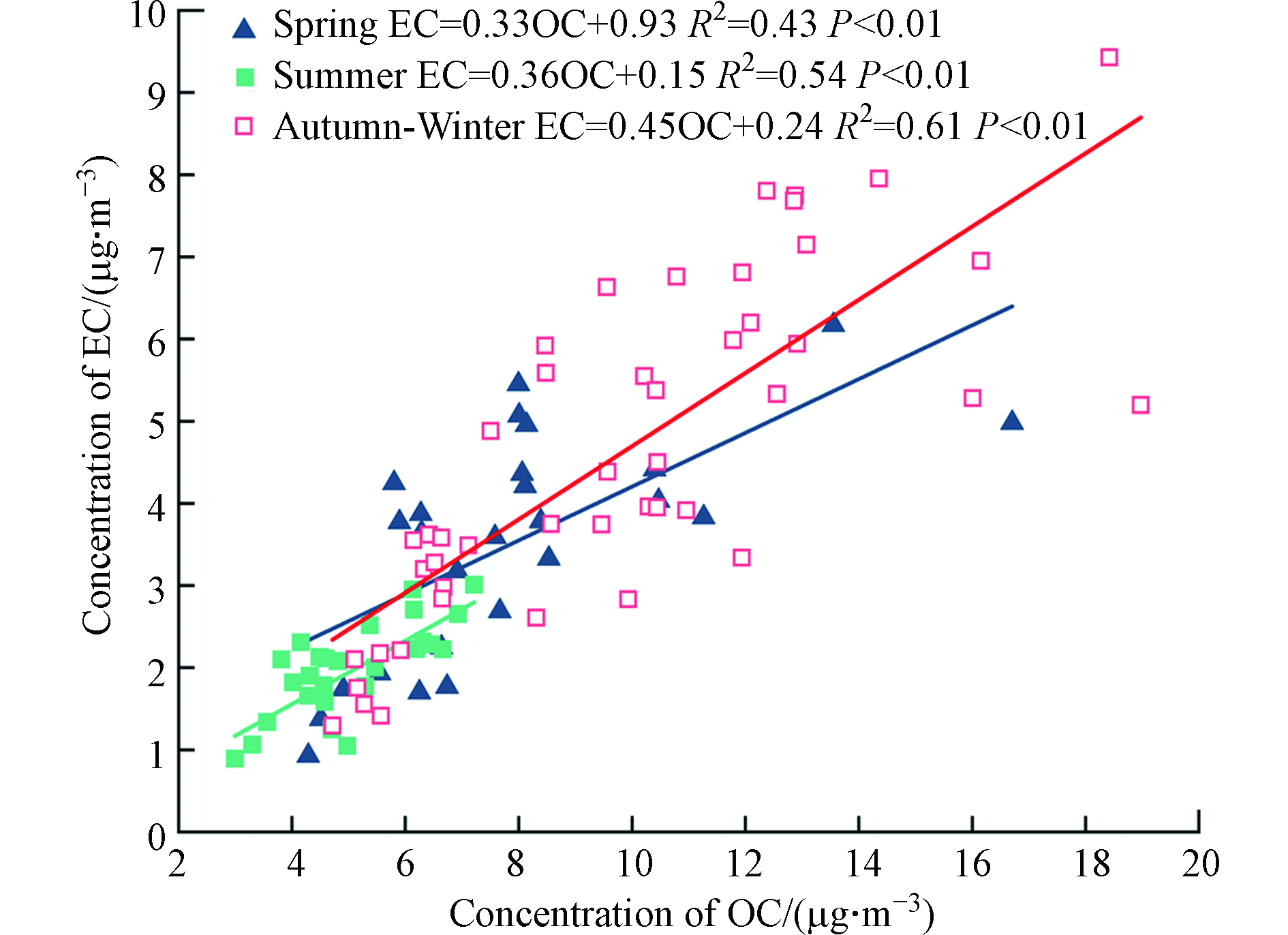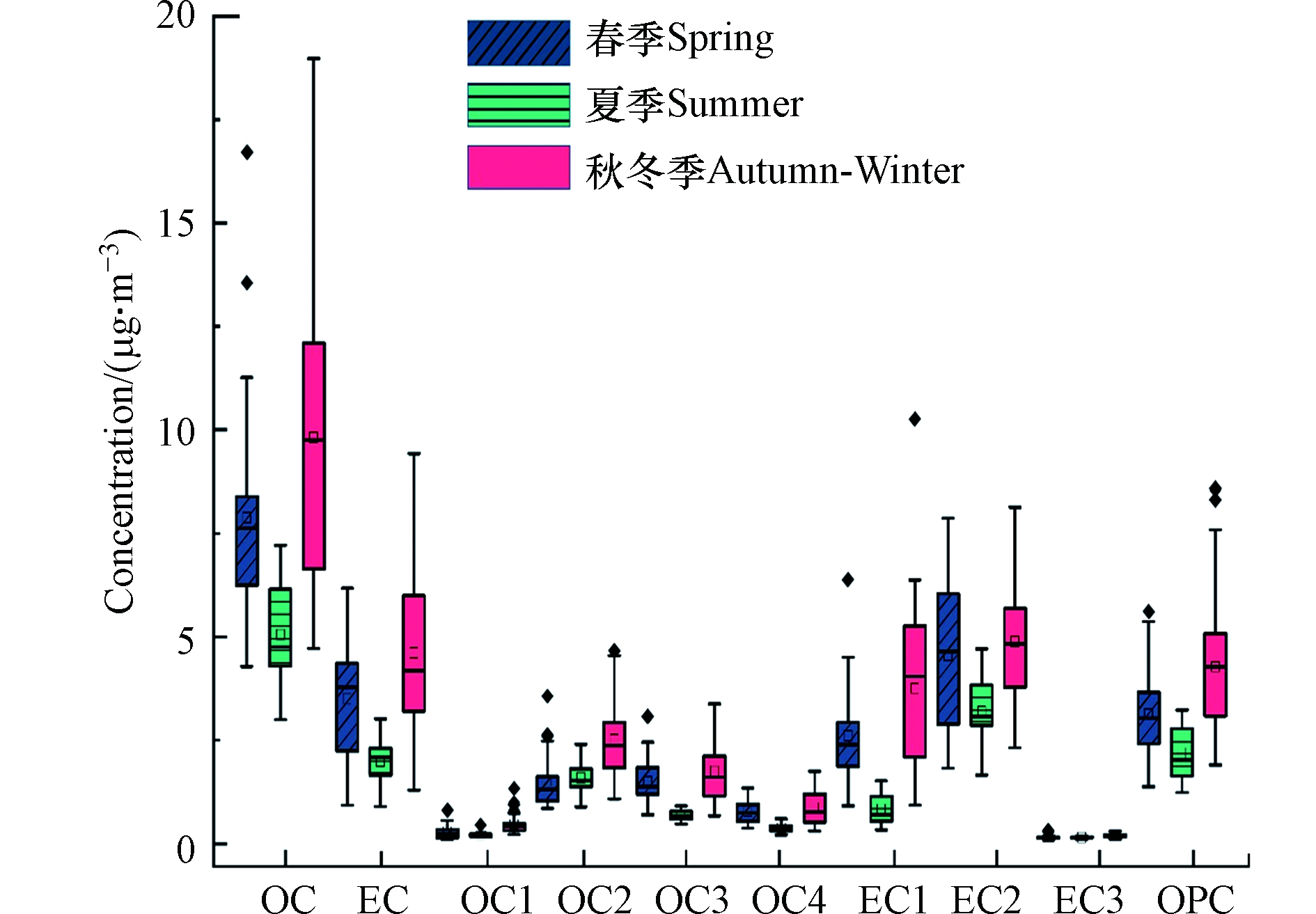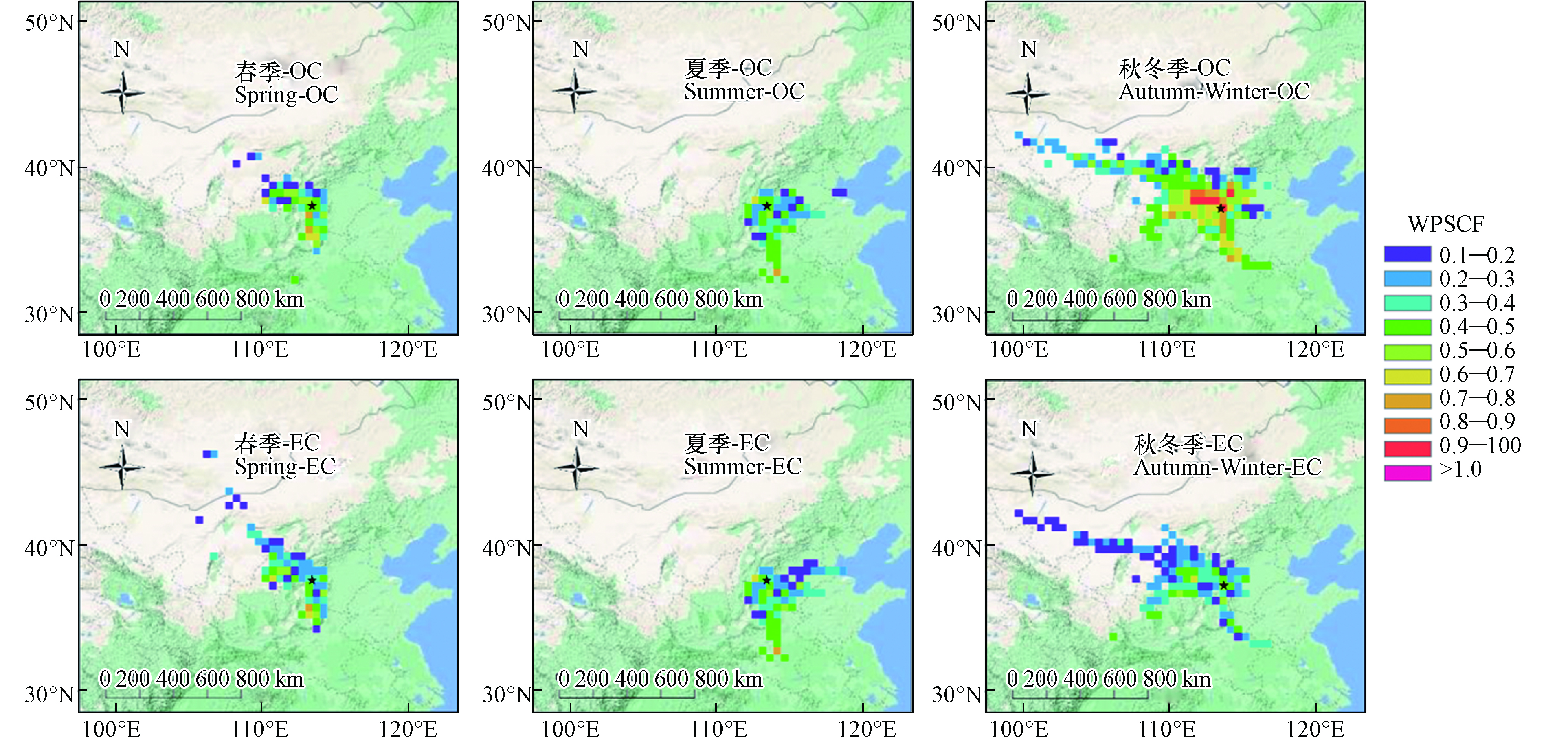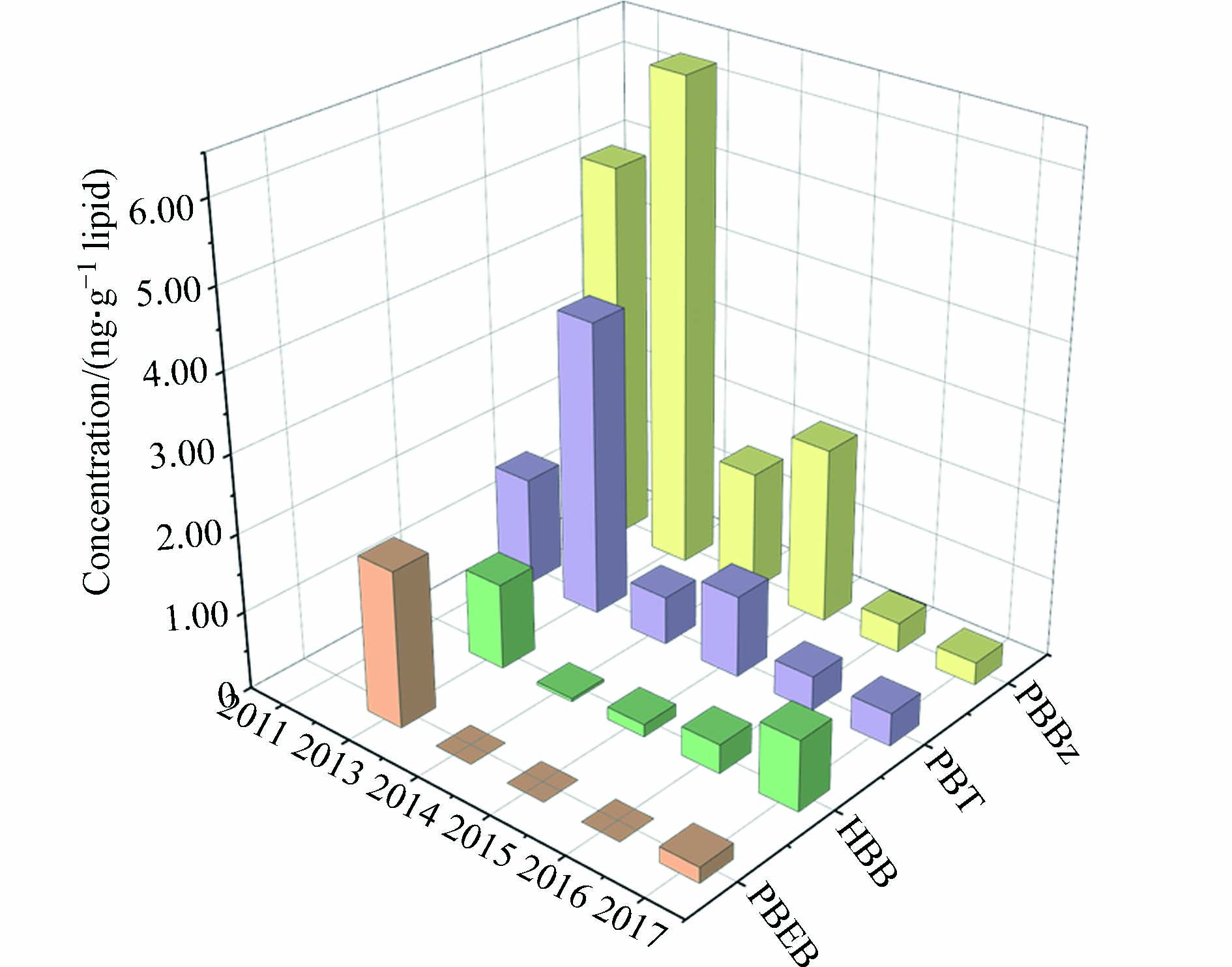-
多溴联苯醚(polybrominated diphenyl ethers, PBDEs)在20世纪70年代以后被大量地用于化工、建材、纺织和电子电器等行业,从而成为全世界用量最大的溴系阻燃剂[1-2],其主要商业产品有五溴联苯醚、八溴联苯醚和十溴联苯醚,由于其毒性特征,PBDEs已被全球各个国家和地区部分限制使用[3-4]。2004年美国部分地区和欧盟全面禁止了五溴联苯醚、八溴联苯醚的生产和使用,2009年五溴联苯醚被纳入《关于持久性有机污染物的斯德哥尔摩公约》名单当中。对于十溴联苯醚,欧盟在2012年将其列为潜在的强持久性和高生物累积性物质,对限制其生产和使用,2017 年十溴联苯醚也被列入《斯德哥尔摩公约》[5]。中国从未生产和使用过八溴联苯醚,并于2007年全面禁止五溴联苯醚的生产和使用,直到2018年,我国对十溴联苯醚的生产和使用加以限制[6]。随着PBDEs被限制和禁用,新型溴代阻燃剂(novel brominated flame retardants, NBFRs)作为替代品进入市场并陆续投入使用。全球21种NBFRs 的产量估计约为每年180000吨[7]。有研究表明,NBFRs同PBDEs一样会从阻燃产品中释放,并且会通过填埋、倾倒、焚烧和回收处理等过程释放[8],现有研究在大气、水、沉积物和生物体等环境介质中均监测到NBFRs的存在。此外NBFRs已经被证实具有直接的神经毒性和神经内分泌系统的破坏作用,对神经行为和生殖发育有不良影响[8]。目前各个国家对NBFRs生产使用并未做出限制,但是人们非常关注这些化学品可能引起的环境和人类健康问题[10]。
由于上述污染物广泛存在并对人类和环境健康构成威胁,其浓度水平在人体组织中的时间变化趋势逐渐成为人们的关注重点。已有大量研究分析了不同国家和地区人体组织中PBDEs浓度的时间趋势[2, 11-17],但是并未得出统一结论。大部分研究表明,由于各个国家已禁止生产和使用商业多溴联苯醚,PBDEs在人体组织内的浓度一直在下降[11-13]。不过有研究学者提出,尽管政府对PBDEs采取了有效的监管行动已经成功地导致某些PBDEs同族体的暴露量下降,但是PBDEs暴露的相对稳定性则表明,人类对这类传统污染物的暴露可能仍然会保持在某一个较高浓度并持续数十年[2, 11- 12]。除以上观点外,也有研究学者发现人体血清中PBDEs的浓度正在增加[16-18]。目前关于人体组织中NBFRs浓度的时间变化研究还比较少,Ma等[10]分析了2011—2015年我国潍坊市人群血清中NBFRs浓度水平,结果显示PBBz(pentabromobenzene)和PBT(pentabromotoluene)均没有明显的变化趋势。中国始终未禁用十溴联苯醚和新型溴代阻燃剂,因此本研究选择我国主要的溴系阻燃剂重要生产基地山东省潍坊市滨海经济技术开发区作为研究区域[19-20],研究当地人体血清中PBDEs和NBFRs(PBBz、PBT、HBB(hexabromobenzene)、pTBX(2,3,5,6-tetrabromo-p-xylene)、PBEB(pentabromoethylbenzene)、TBPH(di(2-ethylhexyl)tetrabromophthalate)和PBBA(pentabormobenzyl acrylate))近十年来的水平和分布的时间变化趋势,以揭示人体PBDEs和NBFRs的暴露风险。
-
本研究分别于2016年4月和2017年7月赴潍坊市滨海经济技术开发区采集当地人群血清样本。本次实验所采集的血清样本均由当地专业的医护人员采集于当地居民的前臂肘窝静脉,样本采集完毕后将所有血清样本低温保存在便携式冰箱并立即带回实验室,储存至−20 °C环境下直至实验分析。每次样本采集时间持续两周,所采集的所有血清样本均为非患有传染性疾病的当地居民。采集的血清样本基本信息详见表1。
-
实验仪器:超纯水净化系统(Milli-Q,Millipore)、离心机(TDL-40B,上海安亭科学仪器厂)、氮气吹干仪(BF-2000,北京八方世纪科技有限公司)、电子分析天平(AB204-L,Mettler Toledo)、旋转蒸发仪(RE-2000A,上海振捷实验设备有限公司)和气相色谱-质谱联用仪(6890N-5975I, Agilent Technologies)。
实验试剂:正己烷(农残级)、异丙醇(色谱级)、甲基叔丁基醚(色谱级)和二氯甲烷(色谱级)(J.T. Baker);正壬烷(≥99%)(Alfa Aesar);盐酸(分析纯)、氯化钾(分析纯)、无水乙醇(分析纯)、无水硫酸钠(分析纯)和中性氧化铝(层析用)(国药集团化学试剂有限公司);氢氧化钾(分析纯)(北京化工厂);硅胶(100—200目)(Merck KGaA);凝胶(Bio-beads SX-3,0.046—0.098 mm)(Bio-Rad Laboratories美国);高纯氮气(99.99%)、高纯氦气(99.99%)和高纯氩气(99.99%)(北京诚为峰科技发展有限公司)。
标准样本:BDE-28、BDE-47、BDE-99、BDE-100、BDE-153、BDE-154、BDE-183、BDE-209、13C-BDE-139和13C-BDE-209(Cambridge Isotope Laboratories ,ANdover,,MA, USA);pTBX、PBBz、PBT、PBEB、HBB、PBBA、TBPH和13C-HBB(Accusta Ndard ,NH,USA)。
-
采用He等[21]的前处理方法并加以适当修改对人体血清样本中的PBDEs和NBFRs进行提取和净化,具体实验操作如下:在3.0 mL血清样本中加入4.0 ng 13C12-BDE-139、40.0 ng 13C-BDE-209和4.0 ng 13C-HBB的内标物质,然后依次加入1.0 mL盐酸(6.0 mol·L−1)、6.0 mL异丙醇和4.0 mL正己烷-甲基叔丁基醚混合溶液(1∶1,V/V),混合均匀后静置过夜。将过夜后的溶液置于离心机(3000 r·min−1,5 min)离心,取上层有机相转移至15.0 mL离心管中,下层水相用4.0 mL正己烷-甲基叔丁基醚混合溶液(1∶1,V/V)萃取,离心后将上层有机相合并至上述15.0 mL离心管中,上述离心萃取步骤重复两次后,将合并的有机溶液氮吹浓缩至5.0 mL,向浓缩液中加入4.0 mL质量分数1%的 KCl水溶液,混合均匀后静置过夜。将过夜的溶液离心后取上层有机相转移至已事先称重的10.0 mL离心管中,下层水相用4.0 mL正己烷-甲基叔丁基醚混合溶液(1∶1,V/V)萃取2次,离心后将上层有机相并入10.0 mL离心管中,将合并后的有机相溶液氮吹浓缩至恒重,利用离心管质量差测定样本的脂肪质量,称重后立即向样本中加入4.0 mL正己烷和2.0 mL KOH溶液(0.50 mol·L−1,水∶乙醇(1∶1,V/V)),将上述溶液混合均匀后静置过夜。将过夜样本离心后,上层有机相转移至10.0 mL离心管中,下层水相用3.0 mL正己烷萃取两次,离心后将上层有机相合并至上述10.0 mL离心管中,将合并后的有机相溶液氮吹浓缩至1.0 mL。将上述浓缩液依次通过GPC和酸性硅胶柱(填充物从下到上依次为玻璃棉0.10 g中性硅胶、0.50 g酸性硅胶和1.50g无水硫酸钠)进行净化除杂,将洗脱液浓缩至80.0 μL后利用GC-MS进行定性定量分析。
-
每批实验过程中均加入空白对照以监测实验过程中可能引入的污染,目标化合物均未在空白样本中检出。目标化合物采用同位素内标法进行定量分析,各物质的校准曲线相关系数r均大于0.9990。采用3倍的信噪比定量, PBDEs(除BDE-209外)、BDE-209和NBFRs的仪器检出限(LOD)分别为0.05—0.27 ng·g−1 lw、3.31 ng·g−1 lw和0.02—0.77 ng·g−1 lw。血清样本中13C-BDE-139、13C-BDE-209和13C-HBB的回收率(中位数±SD)分别为87%±18%、71%±17%和88%±21%。
-
混合血清样本浓度水平低于LOD,表示待测物质在混合血清样本中未检出。计算时,将未检出待测目标物质的混合血清样本的浓度设为零。混合血清样本浓度高于LOD的样本个数占同一年份同一地区总样本个数的百分比定义为检出率。使用IBM SPSS Statistics 19(Armonk,NY,美国)软件对实验数据进行统计学分析。利用独立样本的非参数Mann-Whitney U检验对不同样本之间浓度的差异性进行表征。利用非参数检验Spearman相关分析对两个变量之间的相关性进行衡量。利用因子分析对样本进行分类。所有统计检验均为双侧,当P值小于0.05时在统计学上被认为是显著的。
-
2007、2011、2013—2017年潍坊市滨海经济技术开发区人群混合血清样本中PBDEs的浓度详见表2。2016年和2017年潍坊市滨海开发区采集的人群血清样本中BDE-209(平均浓度:216.23 ng·g−1 lw,2016年;361.67 ng·g−1 lw,2017年)和∑7PBDEs(平均浓度:8.54 ng·g−1 lw,2016年;11.34 ng·g−1 lw,2017年)浓度低于2015年浙江省温岭市电子垃圾拆解地工人血清中BDE-209(520.70 ng·g−1 lw)和∑7PBDEs(33.40 ng·g−1 lw)的平均浓度[22],而与世界其他地区相比则处于较高水平,这表明当地居民受到PBDEs的污染状况仍较为严重。Li等[19]研究认为十溴联苯醚产品的生产是当地环境中PBDEs的重要来源,这可能是造成当地人群血清中PBDEs浓度较高的根本原因。
本研究发现,潍坊市滨海经济技术开发区人群血清混合样本中∑8PBDEs 的浓度在2007—2015年间显著下降后,又在2015—2017年间显著上升,而BDE-209浓度在8种PBDEs中占比超过95%,主导了8种PBDEs总浓度的变化。BDE-209在人体血清内的半衰期只有15 d左右,当地普通人群必须持续暴露于BDE-209环境下才能维持血清中所检测到的浓度水平[23]。这也说明了BDE-209在人体血清中的浓度水平能一定程度地反映采样时期环境中BDE-209的浓度水平。2007—2017年间潍坊市滨海经济技术开发区人群混合血清样本中PBDEs的主要同族体均为BDE-209[10, 19, 24],这与中国使用和生产PBDEs产品的实际情况相吻合。2007—2015年间潍坊市人群混合血清样本中BDE-209的浓度显著下降(P<0.01)(图1),中国商业十溴联苯醚制造商的产能从2009年的2.5万吨下降到2011年的1万吨[25],这可能是造成当地人群混合血清中BDE-209浓度水平显著下降的重要原因之一[10]。值得注意的是,2015—2017年间BDE-209浓度又呈现出显著上升(P<0.01)趋势(图1)。我国直到2018年才对十溴二苯醚的生产和使用作出明确限制[6],既然当地居民十溴二苯醚暴露水平与该商品生产规模有关,因此当地人群暴露BDE-209的浓度水平及其时间变化趋势还需要持续关注。
不同国家或地区人体组织样本中PBDEs浓度的变化趋势是不同的。大部分研究表明,由于各个国家已禁止生产和使用商业多溴联苯醚,PBDEs在人体组织内的浓度一直在下降[12]。例如,Kim等[11]的结果显示,2006年(5.98 ng·g−1 lw)至2013年(2.89 ng·g−1 lw)韩国普通人群血清中的PBDEs浓度呈显著下降趋势。还有学者认为,尽管政府对PBDEs采取了有效的监管行动已经成功地减少某些PBDEs同族体的暴露量,但是由于PBDEs暴露的相对稳定性,人类对这类传统污染物的暴露可能仍然会保持在一个较高浓度并持续数十年[2, 14-15]。例如,Parry等[15]的研究结果显示,美国某地区孕妇血清中∑5PBDEs的浓度在2008—2009年(85.50 ng·g−1 lw)到2011—2012年(51.60 ng·g−1 lw)间大幅下降,但是在2011—2012年到2014(43.60 ng·g−1 lw)年间达到稳定水平。除以上观点外,有研究学者发现人体血清中PBDEs的浓度正在增加[16-19],如Hurley等[16]发现2011—2015年间加利福尼亚中老年女性血清中BDE-47、BDE-100和BDE-153的浓度有所增长,并认为人体血清中的PBDEs浓度在多溴联苯醚产品逐步淘汰后的下降已经趋于稳定,并且已经呈现出增长的趋势。
-
从PBDEs在人体血清中的组成来看,在除BDE-209外的7种PBDEs同族体中,浓度所占比例较大的同族体分别为BDE-153、BDE-183和BDE-99。这与潍坊市十溴联苯醚制造工厂周围土壤的PBDEs的组成相似[19]。这说明可能是十溴联苯醚制造厂在生产或运输过程中释放的BDE-153和BDE-183对当地人群产生了较大的影响。BDE-183在人体血清中占比在2007—2014年显著下降(P<0.01),而在2014—2017年又出现逐渐上升的趋势(P<0.01)(图2),这与当地十溴联苯醚的产量变化相似,说明BDE-183作为商用十溴联苯醚的成分之一,其对人体的暴露量会随着当地十溴联苯醚产量的变化而变化。除2007年外,BDE-153在7种PBDEs中占比均为最大,并在2007—2016年呈现上升趋势(P<0.05)。有文献指出,BDE-153化学性质稳定,能被长时间地储存在脂肪组织中[27],这可能是其占比升高的一个原因。此外,Kierkegaard等[28]认为BDE-209可以在虹鳟鱼体内代谢脱溴成为BDE-153。人体内较高浓度的BDE-153可能是由于BDE-209在人体内发生类似的代谢过程导致的。Feng等[29]认为BDE-99也是BDE-209在虹鳟鱼体内脱溴代谢的产物之一。但是本研究中BDE-99的占比变化与BDE-209的变化并不一致,可能是BDE-209在不同物种体内的代谢途径不完全相同所导致的,而本研究中BDE-99占比变化的原因还需进一步探究。目前的研究证明低溴代PBDEs同族体对人体健康的影响更大[29],但是对于PBDEs在人体内代谢途径和机理的研究较少,因此仍需进一步明确PBDEs在人体内的代谢机制。
-
潍坊市滨海经济技术开发区人群混合血清中NBFRs浓度(0.43—2.37 ng·g−1 lipid,2016年;1.36 —2.28 ng·g−1 lipid,2017年)比PBDEs浓度(100.52—795.62 ng·g−1 lw,2016年;85.55–913.12 ng·g−1 lw,2017年)低1—3个数量级。2011—2017年当地人群混合血清样本中可检出的各NBFRs浓度详见表2,pTBX、PBBA和TBPH均未检出,表明当地人群受到这几种物质的影响较小。目前,国内外关于人体血清中NBFRs浓度的报道还比较少。Cequier等[29]分析了2012年挪威女性血清样本中HBB的浓度,检出率为48%,浓度范围为N.D—0.41 ng·g−1 lw,平均浓度为0.07 ng·g−1 lw。国内方面,Gao等[31]在研究的7个样本中检测到PBT的浓度范围为0.11—0.37 ng·g−1 lipid,仅在1个样本中发现HBB和PBEB的浓度(小于0.05 ng·g−1 lw)高于检出限。与之相比,2016年和2017年潍坊市人群血清中NBFRs(PBBz、PBT、PBEB和HBB)浓度较高,且普遍存在。
目前,NBFRs在人体内浓度的时间变化趋势的研究还鲜有报道。本研究2011—2017年间潍坊市滨海经济技术开发区人群混合血清样本中PBBz和PBT的浓度呈现出显著下降趋势(P<0.05)(图3)。PBBz和PBT在2016年和2017年潍坊市滨海经济技术开发区人群混合血清样本中的检出率均为100%,这表明目前PBBz和PBT仍然是当地居民人群体内仍然普遍存在的污染物质。潍坊市滨海经济技术开发区内存在PBT的生产厂家[28],因此当地的生产活动可能是人群血清中PBT的主要来源。不过目前关于PBBz的主要用途、产量和使用情况等信息较少,无法分析该物质的主要来源。目前仅有Gao等[31]在北京人群血清样本中检测出了PBEB,其浓度水平低于0.05 ng·g−1 lw。而在2014—2016年潍坊市人群血清中未检出PBEB,但是在2017年潍坊市滨海经济技术开发区人群混合血清样本中的检出率为100%,说明当地人群体内PBEB普遍存在,潍坊市内可能存在新的PBEB释放源。潍坊市滨海经济技术开发区人群混合血清中HBB的浓度在2014年较2013年下降2个数量级,但是在2014—2017年间呈现出逐年上升趋势(图3),且2016年和2017年当地人群血清中HBB的检出率均为100%。据了解当地存在HBB的生产厂家,且HBB在人体内不易降解[32],其自2014年起逐年增长的趋势应该引起人们的注意。综上所述,已检出的4种NBFRs在潍坊市滨海经济技术开发区人群体内普遍存在,NBFRs可能会对人体健康造成危害[32-34],应持续关注当地人群血清中NBFRs的浓度水平和时间变化趋势。
-
潍坊市滨海经济技术开发区人群血清样本中的主要溴代阻燃剂为PBDEs,其浓度比NBFRs的浓度高出1—3个数量级,BDE-209是人体血清中PBDEs的主要同族体,这可能与其使用历史较长并且商业十溴联苯醚目前仍在中国使用有关。潍坊市滨海经济技术开发区人群血清中的∑8PBDE浓度在2007—2015年下降后,2015—2017年间呈现显著上升趋势,这表明当地人群PBDEs的暴露风险出现了反弹且正在增加,尤其是暴露于BDE-209的风险正在增加。在本文所研究的7种NBFRs中,PBT、PBBz、PBEB、和HBB在潍坊市人群血清中普遍存在,尤其是PBEB在2014—2016年未检出,但在2017年检出率为100%,同时2014—2017年HBB浓度逐年上升,需持续关注。
由于当地溴代阻燃剂产品的生产和运输等过程是当人体暴露溴代阻燃剂的主要途径,在今后还应持续关注溴代阻燃剂生产源区人体血清中溴代阻燃剂浓度水平的变化趋势,尤其是在PBDEs逐步淘汰的情况下,要更加关注当地NBFRs产品的生产情况以及人群血清中NBFRs浓度水平的变化。
潍坊市滨海开发区人群血清中溴代阻燃剂浓度水平的时间变化趋势
Temporal trends of concentration of brominated flame retardants in serum of population in Binhai Development District of Weifang City
-
摘要: 本研究以溴系阻燃剂生产源区潍坊市滨海开发区作为研究区域,对潍坊市人群血清中PBDEs和NBFRs的浓度水平分布及时间变化趋势进行了分析。潍坊市人群血清样本中的PBDEs浓度(100.52—795.62 ng·g−1 lw(lipid weight,脂重),2016年;85.55—913.12 ng·g−1 lw,2017年)比NBFRs的浓度(0.43—2.37 ng·g−1 lw,2016年;1.36 — 2.28 ng·g−1 lw,2017年)高出1—3个数量级,表明PBDEs仍为当地主要的溴系阻燃剂污染物。8种PBDEs同族体中,BDE-209的浓度(94.45—769.19 ng·g−1 lw,2016年;76.02—900.63 ng·g−1 lw,2017年)最高,这可能是因为十溴联苯醚产品仍在当地生产和使用,且BDE-209作为十溴联苯醚产品的主要成分被大量释放到环境中并被人体吸收。潍坊市滨海开发区人群血清中NBFRs的检出率较高,尤其是PBBz和PBT在2016年和2017年人群混合血清样本中的检出率达到100%,这表明NBFRs在人群体内普遍存在,应该引起关注。值得注意的是,潍坊市滨海开发区人群血清中PBDEs浓度在2007—2015年下降后,2015—2017年间却出现了反弹上升的趋势,而且HBB和PBEB在2014—2017年也呈现出上升的趋势,说明当地人群暴露风险也在增加。Abstract: In this study, we analyzed the concentration distribution and temporal trend of PBDEs and NBFRs in serum of local residents from. Binhai Development district of Weifang City, which is the production area of brominated flame retardant. The concentrations of PBDEs (100.52—795.62 ng·g−1 lw, 2016; 85.55—913.12 ng·g−1 lw, 2017) in serum of loacal residents were 1—3 orders of magnitude higher than that of NBFRs (0.43—2.37 ng·g−1 lw, 2016; 1.36—2.28 ng·g−1 lw, 2017), indicating that PBDEs was still the main brominated flame retardant pollutants. BDE-209 showed the highest concentration (94.45— 69.19 ng·g−1 lw, 2016; 76.02—900.63 ng·g−1 lw, 2017), which may be due to the fact that decabromodiphenyl ether products was still produced and used locally, and BDE-209 as the main component of decabromodiphenyl ether products, was released into the environment in large quantities and absorbed by the human body. The detection rate of NBFRs in the serum was relatively high, especially, the detection rate of PBBz and PBT in the mixed serum in 2016 and 2017 reached 100%, which indicated that NBFRs existed widely in local residents and should be paid attention to. It should be noted that the concentrations of PBDEs in the serum of local residents decreased from 2007 to 2015, but rebounded and increased from 2015 to 2017, and HBB and PBEB also showed an increasing trend from 2014 to 2017, indicating that the health exposure risk of local population was also increasing.
-
Key words:
- human serum /
- brominated flame retardant /
- Temporal trends
-
大气细颗粒物 (PM2.5)是影响我国大多数城市空气质量的主要污染物[1-2]。碳质气溶胶是PM2.5的重要组成部分,主要组分包括有机碳(OC)和元素碳(EC),约占PM2.5质量的20%—70%[3-5]。OC来源复杂,除污染源(如机动车、化石燃料、生物质燃烧等)直接排放的一次有机碳(POC)外,还有来自光化学反应生成的二次有机碳(SOC)[6];EC主要来自化石燃料和生物质的不完全燃烧[7]。研究表明,碳质气溶胶对能见度、空气质量和区域气候都有很大影响[8-9]。因此,研究碳质气溶胶的污染特征及来源对有效控制碳质颗粒物至关重要。
近年来,研究学者对PM2.5中OC、EC进行了大量研究,探讨了含碳质组分的浓度水平、季节分布以及污染来源等特征。如张婷婷等[10]对北京市城区碳质组分分析发现,OC在PM2.5中所占比例(13%)大于EC(5%),二者季节变化特征均为冬季最高,夏季最低。程渊等[11]发现SOC为天津市夏季和冬季碳质组分中重要组成部分,在OC中占比分别为34%和27%。张懿华等[12]对上海城区碳质组分进行分析,发现燃煤源、机动车排放、扬尘源和生物质燃烧源是OC、EC的主要来源。董贵明等[13]使用潜在源贡献因子法分析发现,西南部的山西省和河南省部分地区是北京市大气PM2.5中OC的主要潜在源区,南部的山东省和河南省部分地区是EC的主要潜在源区。目前,对碳质气溶胶的研究主要集中在京津冀、长三角、珠三角及关中地区等城市[11,14-15],为颗粒物中碳质气溶胶污染防治提供了重要的研究基础。
阳泉市位于山西省东部,是京津冀大气污染传输通道“2+26”城市之一。电力、煤炭、水泥、有色金属冶炼及加工等是阳泉市主导产业,经济结构整体偏重,再加上近些年机动车保有量逐年上升,导致阳泉市大气颗粒物污染问题日益突出,阳泉市2018年全年污染天数120 d,占比达33.0%,PM2.5浓度为59 μg·m−3是国家Ⅱ类标准限值[16](35 μg·m−3) 的1.7倍.已有的研究包括利用空气质量模式对阳泉市重污染过程中PM2.5的来源进行分析,利用受体模型对阳泉市秋冬季PM2.5化学组分及来源分析等[17-18],但鲜有文献对阳泉市不同季节PM2.5中碳质气溶胶进行研究。
本研究以阳泉市城区为研究对象,对2018年7月—2019年4月PM2.5样品中OC和EC组分含量进行分析,使用最小相关系数法(MRS)估算了SOC的浓度,并利用比值分析、相关性分析及潜在源贡献因子分析(PSCF)研究了PM2.5中碳质气溶胶的来源,以期为阳泉市颗粒物污染防治提供方向。
1. 材料与方法(Materials and methods)
1.1 样品采集
阳泉市是典型的山地型城市(“两山夹一谷”),属暖温带半干旱大陆性季风气候。本研究采样点(113.61°E,37.85°N)位于阳泉市文化宫3层楼顶平台,距地面约11 m,为教育、住宅、商业混合区,附近无明显排放源(图1).
PM2.5样品采集时间为2018年7月2日至2018年7月31日、2018年10月15日至11月30日和2019年3月1日至2019年3月31日,分别代表夏季、秋冬季和春季,样本数分别为26、46和26。采样期间每天10:00至次日09:00使用多通道采样器(TH-16A,武汉天虹仪表有限公司)采集PM2.5样品,采样器流量为16.7 L·min−1。选择直径为47 mm的石英滤膜进行PM2.5的采集,并用于分析碳质组分。
气象参数(风速、湿度和温度)和气态污染物(SO2、NO2、CO和O3-8H)来自中国环境监测总站的“全国城市空气质量实时发布平台”[19]。
1.2 化学分析方法
使用美国Sunset实验室研发的Model 5L OC/EC热光碳分析仪对样品中的OC、EC进行分析测定,主要分析原理是IMPROVE热光反射法[20],即使用程序升温,分2个阶段:第1阶段为纯氦环境下升温,分别在140、280、480、580 ℃条件下得到OC1、OC2、OC3、OC4这4种亚组分,第2阶段为在有氧环境(2%氧+98%氦)下升温,分别在580、740、840 ℃条件下得到EC1、EC2、EC3的3种亚组分。升温全程采用633 nm激光照射样品,测定有机碳碳化形成的裂解碳(OPC),最终定义:
OC=OC1+OC2+OC3+OC4+OPC (1) EC=EC1+EC2+EC3−OPC (2) 1.3 质量保证及控制
石英滤膜在使用前先在450 ℃下燃烧4 h,除去滤膜中残留碳及其他杂质。采样前后滤膜置于恒温恒湿箱(温度22 ℃、相对湿度40%)内平衡24 h后,在电子天平室进行称重(检测限是1 μg),最后将滤膜用铝箔纸包好保存在−20 ℃的冰箱。采样期间,定期对相关配件和耗材进行更换,以及对采样器进行校准;每批次样品分析时,采用CH4/He 标准气体对仪器进行校正,相对标准偏差不超过5%,每次10%样品进行重复分析。
1.4 潜在源贡献因子分析(PSCF)
通过计算污染轨迹与所有轨迹在途径区域中的停留时间之比来解析每个网格对受点区域污染的贡献。将所选研究区域划分为i×j个网格,mij为经过这些网格的污染轨迹数,nij为所有轨迹数量,本研究设定的污染阈值为各季节各污染物70%分位数浓度水平,PSCF计算公式为:
PSCFij=mij/nij (3) 由于PSCF是一种条件概率函数,当nij较小时,会增加结果的不确定性。为降低这种误差,引入权重函数Wij,即WPSCF=Wij×PSCF。当某个网格中的nij小于研究区域内每个网格平均轨迹数的3倍时,需要引入Wij来降低PSCF的不确定性。WPSCF值越大,表明此区域对受点的质量浓度贡献越大。
2. 结果与讨论(Results and discussion)
2.1 PM2.5及碳质气溶胶污染特征
如表1所示,采样期间阳泉市ρ(PM2.5)为(69.4±26.6) μg·m−3 (19.5—252.5 μg·m−3),是GB3095—2012 Ⅱ类标准年均限值[16](35 μg·m−3)的2.0倍,是世界卫生组织(WHO)环境空气指导值[21](10 μg·m−3)的6.9倍,表明阳泉市细颗粒物污染较为严重。采样期间ρ(PM2.5)的季节变化明显,主要表现为春季((81.8±28.4)μg·m−3) >秋冬季((74.0±28.6)μg·m−3) >夏季((48.6±11.7)μg·m−3)。分析发现ρ(PM2.5)的季节变化主要是受到污染源和气象因素的双重影响。秋冬季与春季观测期间PM2.5浓度因受采暖期(2018年11月1至2019年3月31日)燃煤及生物质燃烧的影响而高于夏季PM2.5浓度。春季低湿度(47%,显著低于其他季节)和高风速(1.4 m·s−1,显著高于其他季节)使颗粒物再次悬浮,导致春季ρ(PM2.5)高于秋冬季(表1)。夏季ρ(PM2.5)最低是由于空气对流增强以及降雨较其他季节多。
表 1 采样期间PM2.5、OC、EC浓度以及气象参数Table 1. The concentration of PM2.5, OC, and EC, and meteorological parameters during the sampling period季节Season 温度/℃ Temperature 相对湿度/%Relative humidity 风速/(m·s−1)Wind speed PM2.5/(µg·m−3) OC/(µg·m−3) EC/(µg·m−3) (OC/PM2.5)/% (EC/PM2.5)/% 春季 8±3 47±11 1.4±0.7 81.8±28.4 7.9±1.9 3.5±1.1 9.6 4.3 夏季 26±2 88±7 0.7±0.4 48.6±11.7 5.1±1.0 2.0±0.4 10.4 4.1 秋冬季 8±3 69±12 0.8±0.6 74.0±28.6 9.8±2.9 4.6±1.7 13.3 6.2 平均 13±7 69±17 0.9±0.6 69.4±26.6 8.0±2.8 3.6±1.5 11.5 5.2 总碳气溶胶(TCA)指气溶胶中的含碳组分,可反映区域碳质气溶胶的污染严重程度[22],通常计算方法为有机物(OM=1.6×OC)和EC的质量浓度之和[23],即TCA=OM+EC。采样期间TCA浓度为16.4 μg·m−3,在PM2.5中的占比为23.6%,高于太原[15](20%)和广州[14](22%),低于北京[13](25%)、天津[11](27%)、武汉[24](27%)、菏泽[25](25%)等城市(表2)。说明阳泉市碳质气溶胶污染处于中等水平。
表 2 阳泉市OC、EC、TCA浓度及TCA/PM2.5与国内其它城市比较Table 2. Comparison of OC、EC and TCA concentrations, and TCA/PM2.5 values in Yangquan and other Chinese cities城市City 采样时间Time OC/(μg·m−3) EC/(μg·m−3) TCA/(μg·m−3) (TCA/PM2.5)//% 分析方法Method 文献Reference 阳泉 2018.07—2019.3 8.0±2.8 3.6±1.5 16.4 23.6 IMPROVE TOR 本研究 太原 2014.03—2014.12 13.5±14.0 6.5±6.1 28.1 20 IMPROVE TOR [13] 广州 2015.06—2016.05 8.2±5.0 1.8±0.8 14.9 22 IMPROVE TOR [14] 北京 2017.12—2018.12 11.2±7.8 1.2±0.8 19.1 25 IMPROVE TOR [15] 天津 2016.02—2016.08 10.6 4.2 21.2 27 IMPROVE TOR [16] 武汉 2011.07—2012.02 19.4 2.9 34.4 27 IMPROVE TOR [17] 菏泽 2015.08—2016.04 13.2±9.6 5.2±3.6 26.3 25 IMPROVE TOR [18] 采样期间OC、EC的平均浓度分别为(8.0±2.8) μg·m−3和(3.6±1.5) μg·m−3,均呈秋冬季((9.8±2.9)μg·m−3、(4.6±1.7) μg·m−3)>春季((7.9±1.9)μg·m−3、(3.5±1.1) μg·m−3)>夏季((5.1±1.0)μg·m−3、(2.0±0.4 μg·m−3),季节性变化趋势与ρ(PM2.5)不同。春季和夏季OC、EC在PM2.5中的占比均明显低于秋冬季(表1)。分析发现,虽然秋冬季与春季均受到燃煤源的影响,但春季碳含量相对较低的扬尘、矿物质等组分对ρ(PM2.5)的贡献高于冬季[17],最终导致出现春季ρ(PM2.5)高于秋冬季,而秋冬季OC、EC浓度及其在PM2.5中占比却高于春季的现象. EC在PM2.5中占比与其浓度的季节变化一致,即秋冬季(6.2%)>春季(4.3%)>夏季(4.1%)(表1),这一结果与纪尚平等[26]2015和2017年在邯郸市的研究结果一致。
2.2 SOC的估算
目前技术还难以直接区分气溶胶中一次有机物(POC)和SOC[27]。最常用的SOC计算方法是EC示踪法,计算公式[23]为:
SOC=OC−EC×(OC/EC)pri (4) 式中,SOC为估算的二次有机碳质量浓度,µg·m−3;(OC/EC)pri为一次排放到大气中的OC/EC比值.
EC示踪法的关键是确定(OC/EC)pri的值,本研究使用最小相关系数法(MRS,Minimum R Squired)来确定(OC/EC)pri比率[28]。MRS通过计算一组假设的(OC/EC)pri和SOC值得到(OC/EC)pri,产生最小R2 (SOC,EC)的(OC/EC)pri即为实际的(OC/EC)pri比率[29]。结果显示春季、夏季和秋冬季(OC/EC)pri的值分别为1.37,1.53和1.39 (图2)。
如表3所示,采样期间SOC的平均浓度为(3.0±1.4) µg·m−3,在OC中占比达到38%,说明SOC是阳泉市PM2.5中OC的重要组成部分. SOC浓度季节变化趋势为秋冬季((3.4±1.6) µg·m−3)>春季((3.2±1.4)µg·m−3)>夏季((2.0±0.7)µg·m−3),SOC浓度的季节变化趋势与OC、EC浓度季节变化特征一致,但与SOC/OC的季节变化不同,春季和夏季的SOC/OC值均为40%,均高于秋冬季(35%)。春季SOC/OC值较高,是由于阳泉春季的风速较大且湿度较低,同时城市周边存在大量裸露的山地,极容易发生扬尘天气,扬尘的碱性特征有利于酸性气体的吸附和异相反应,发生了扬尘和有机物耦合反应,促进了二次有机物的转化[30-32]。相比于其他季节,夏季气温较高 (26 ℃),湿度大 (88%),有利于挥发性、半挥发性有机物等前体物的光化学反应生成 SOC[33]。秋冬季SOC/OC值较低,与秋冬季温度低导致SOC前体物的转化率下降有关[9]。
表 3 采样期间二次有机碳浓度特征Table 3. Concentration characteristics of second organic carbon during the sampling period季节Season OC/EC (OC/EC)pri SOC/(µg·m−3) POC/(µg·m−3) (SOC/OC)/% 春季 2.5±0.7 1.37 3.2±1.4 4.8±1.5 40 夏季 2.6±0.4 1.53 2.0±0.7 3.0±0.7 40 秋冬季 2.3±0.5 1.39 3.4±1.6 6.4±2.4 35 平均 2.4±0.6 1.43 3.0±1.4 5.1±2.1 38 2.3 OC、EC比值和相关性分析
不同污染源排放的碳质气溶胶中OC/EC比值不同,因此可以采用OC/EC来定性确定碳质气溶胶的来源。典型污染源包括燃煤(OC/EC=2.5—10.5)[34]、机动车尾气(OC/EC=1.0—4.2)[35]和生物质燃烧(OC/EC=16.8—40.0)[36]。阳泉市采样期间OC/EC在1.4—4.8之间,春季、夏季和秋冬季OC/EC分别为2.5、2.6和2.3,说明采样期间各季节PM2.5中碳质气溶胶的主要来源可能是燃煤源和机动车尾气。
有研究表明,通过OC和EC之间的相关性,可以初步判断二者是否都具有同源性[29]。若OC和EC的相关性较好,说明二者具有相似的来源,反之,说明二者可能来源差异较大或具有二次污染[23,37]. OC与EC在夏季、春季和秋冬季均呈弱相关(图3),R2分别为0.54,0.43和0.61,这表明阳泉市的碳质气溶胶来源较为复杂,受到多种排放源和大气化学转化过程的影响。
2.4 碳质组分与气态污染物的相关性
研究表明[38-39],城市环境大气中SO2主要来源于燃煤排放,而CO和NO2主要来源于机动车尾气排放,O3和SOC主要是由光化学反应产生。因此,通过分析碳质组分与气态污染物之间的相关性,可定性地判断碳质组分的形成和来源。从全年来看,OC和EC与气态污染物SO2、NO2和CO均呈显著正相关,说明阳泉市碳质气溶胶可能受到机动车尾气和燃煤源的影响(表4)。从季节变化来看,夏季、秋冬季和春季PM2.5中OC和EC与SO2、NO2和CO均呈显著正相关,表明燃煤源和机动车尾气对各季节碳质组分的影响都比较大。夏季和春季OC和SOC与O3均呈正相关,尤其是夏季(0.731和0.657,P<0.01),而秋冬季OC和SOC与O3呈负相关(表4)。夏季和春季的日均O3浓度(111 µg·m−3和62 µg·m−3)明显高于秋冬季(33 µg·m−3),说明夏季和春季大气氧化作用强,加快污染物光化学反应的进行,促进SOC和O3的形成,而秋冬季由于光照时间短,大气氧化能力弱,污染天气频发,能见度下降,不利于光化学反应的进行,这与前文对SOC的研究结果一致,即秋冬季OC中SOC的占比低于春季和夏季。
表 4 采样期间PM2.5中碳质组分与气态污染物间相关性Table 4. Correlation of carbon components in PM2.5 with gaseous pollutants during the sampling period季节Season 碳质组分 SO2/(µg·m−3) NO2/(µg·m−3) CO/(mg·m−3) O3/(µg·m−3) 全年 OC 0.839** 0.744** 0.729** −0.470** EC 0.824** 0.772** 0.593** −0.514** SOC 0.421** 0.310** 0.494** −0.196 夏季 OC 0.417* 0.703** 0.405* 0.731** EC 0.445* 0.519** 0.642** 0.395* SOC 0.129 0.476* −0.112 0.657** 秋冬季 OC 0.820** 0.639** 0.916** −0.311* EC 0.866** 0.744** 0.775** −0.291 SOC 0.229 0.092 0.499** −0.136 春季 OC 0.695** 0.648** 0.834** 0.185 EC 0.488* 0.485* 0.492* −0.047 SOC 0.512** 0.448* 0.702** 0.303 注:**在0.01水平(双侧)上显著相关;*在0.05水平(双侧)上显著相关. Note: ** P≤0.01; represents significant correlation; * P≤0.05; represents significant correlation. 2.5 碳质气溶胶来源解析
源谱研究[10,40-41]发现,不同污染源源排放的碳质亚组分组成都有一定的差异,可以分析碳质气溶胶的来源[15]。其中,OC1主要是生物质燃烧排放的碳质组分,OC2是燃煤排放的标识组分,OC3和OC4是道路扬尘中丰富的碳质组分,EC1在汽油车尾气中的含量较高,EC2和EC3在柴油车尾气中的含量较高.如图4为不同季节8种碳亚组分的浓度,与OC、EC的季节变化规律一致,均呈秋冬季>春季>夏季。同时,各季节碳质组分浓度排序基本一致,均呈现EC2、OPC、EC1和OC2浓度最高,OC3和OC4居中,OC1和EC1最小的趋势。各季节EC2、EC1和OC2等亚组分的浓度之和在总碳(TC)中的占比在春季、夏季和秋冬季分别达到76%、79%和77%,表明阳泉市各季节碳质气溶胶主要来源于机动车尾气和燃煤源,这与OC/EC比值法以及碳质气溶胶与气态污染物相关性分析的污染来源一致。此外,各季节OC3、OC4浓度在TC中占比均超过15%,说明扬尘源对阳泉市碳质气溶胶的贡献也不容忽视。春季和秋冬季OC3、OC4浓度之和在TC中占比分别为20%和18%,明显高于夏季(15%),说明春季和秋冬季扬尘源对碳质气溶胶的贡献高于夏季。
2.6 碳质组分潜在源区分析
采样期间碳质组分PSCF分析结果如图5所示。整体来看,碳质组分除受到本地排放的影响之外,秋冬季和春季OC受到周边区域的影响较大,EC受到远距离传输的影响较大,而夏季OC、EC均受到近距离的影响。
夏季OC、EC的潜在源区分布在阳泉市南部和东部方向的区域范围内,WPSCF 值均处于较低水平,该区域传输影响较弱。春季OC、EC的潜在源区主要分布在阳泉市西部和南部方向的区域内,同时EC也受到阳泉市西北方向的内蒙古和蒙古国部分地区的远距离传输的影响。春季OC、EC的WPSCF高值(>0.6)[42-43]主要出现在阳泉市西部方向的山西省中部地区和南部方向的山西省东南部地区。山西省中部和东南部都是重要的煤炭生产和使用地区,其排放的污染物对于阳泉市碳质气溶胶的影响较大。秋冬季OC、EC的潜在源区在阳泉市各方向上均有分布,在西北和东南方向分别最远延伸至内蒙古西部和河南省的东部地区。相比于EC,秋冬季OC受到本地以及周边区域的影响明显增加,WPSCF高值(>0.6)分布较为集中,分布在山西省以及河南省和河北省的部分地区,形成了一个WPSCF高值带。
3. 结论(Conclusion)
(1) 采样期间ρ(PM2.5)为(69.4±26.6) μg·m−3,其中春季ρ(PM2.5)为(81.8±28.4) μg·m−3,高于夏季和秋冬季(48.6±11.7)μg·m−3和(74.0±28.6) μg·m−3。OC、EC的浓度分别为(8.0±2.8)μg·m−3和(3.6±1.5) μg·m−3,季节性变化趋势均呈秋冬季>春季>夏季。
(2) PM2.5中SOC的平均浓度为(3.0±1.4) µg·m−3,在OC中为38%,在春季和夏季的占比(40%)高于秋冬季(35%)。OC、EC与气态污染物SO2、NO2和CO均显著相关,表明燃煤源和机动车尾气对碳质组分的影响较大。
(3) 各季节碳质亚组分分析显示PM2.5中碳质气溶胶主要来源于机动车尾气、燃煤源和扬尘源,其中扬尘对春季和秋冬季碳质气溶胶的贡献高于夏季。
(4) PSCF分析表明,碳质组分除受到本地排放的影响之外,秋冬季和春季的OC受到周边区域的影响较大,EC受到远距离传输的影响较大,而夏季OC、EC均受到近距离的影响。
-
表 1 潍坊市滨海开发区人群血清样本基本信息
Table 1. Basic information of serum samples of population in Binhai Development district, Weifang City
年份Year 年龄段Age range 平均年龄 Mean age 志愿者数量 Number of volunteers 男性 女性 男性 女性 2016 20—29 26 26 10 47 30—39 36 36 9 60 40—49 43 45 8 47 50—59 53 55 11 12 ≥60 68 67 25 27 总计 63 193 2017 20—29 26 25 28 54 30—39 34 34 43 77 40—49 44 44 80 66 50—59 54 54 40 27 ≥60 73 72 40 40 总计 231 264 表 2 2007—2017年山东省潍坊市滨海经济技术开发区人群混合血清样本中PBDEs和NBFRs的浓度水平(单位:ng·g−1 lw)
Table 2. Concentrations of PBDEs and NBFRs in mixed serum samples of the population in Binhai Development district, Weifang City from 2007 to 2017 (ng·g−1 lw)
2007年[19] 2011年[20] 2013年[25] 2014年[10] 2015年[10] 2016年 2017年 PBDE 范围Range 均值Mean 范围Range 均值Mean 范围Range 均值Mean 范围Range 均值Mean 范围Range 均值Mean 范围Range 均值Mean 范围Range 均值Mean BDE-28 23.40—45.90 29.24 1.67—6.89 4.07 1.30—14.88 4.51 N.D.–1.06 0.38 N.D.—1.15 0.31 0.27—1.21 0.72 0.37—1.85 1.06 BDE-47 17.20—33.90 21.34 0.79—2.00 1.47 N.D.—7.07 3.02 N.D.—0.20 0.05 N.D.—1.60 0.19 N.D.—0.50 0.26 0.64—0.97 0.79 BDE-99 18.70—37.20 23.30 1.82—3.20 2.23 2.42—13.74 5.63 N.D.—1.55 0.73 0.64–2.66 1.41 0.73—2.76 1.19 1.29–2.22 1.71 BDE-100 11.90—23.60 14.74 0.94—1.21 1.08 N.D.—5.13 2.48 N.D.–0.21 0.04 N.D.—1.46 0.23 N.D.—0.77 0.33 0.57—1.18 0.92 BDE-153 25.70—51.50 32.64 3.91—25.81 11.23 2.13—9.78 6.09 0.47—3.79 1.33 0.47—7.75 3.04 1.04—16.66 4.81 1.91—6.17 4.41 BDE-154 33.70—67.00 41.73 0.28—0.72 0.51 N.D.—1.30 0.26 N.D. N.D. N.D.—0.38 0.05 N.D. N.D. 0.38—1.13 0.77 BDE-183 37.60—74.50 46.77 1.38—8.86 2.87 N.D.—6.98 3.24 N.D. N.D. N.D.—4.45 0.69 N.D.—6.73 1.22 N.D.—3.08 1.68 BDE-209 105.70—1640.40 440.04 62.03—738.08 219.98 30.83—225.81 91.31 22.71—63.47 38.50 3.33—125.87 25.72 94.45—769.19 216.23 76.02—900.63 361.67 a ∑7PBDE 168.20—333.60 209.76 13.45—40.38 23.46 13.54—41.15 25.24 0.80—5.62 2.65 1.20—15.58 5.91 2.48—26.42 8.54 6.21—14.23 11.34 b ∑8PBDE 304.20—1827.70 649.80 79.73—778.46 243.44 44.37—256.52 116.55 24.88—65.96 41.15 8.68–128.98 31.64 100.52—795.62 224.77 85.55—913.12 373.01 PBBz c— c— 1.10—21.00 4.90 3.50—10.00 6.30 1.27—2.17 1.57 1.88—3.21 2.26 0.23—0.78 0.38 0.21—0.41 0.29 PBT c— c— 0.89—2.30 1.40 2.00—5.70 3.80 0.50—0.77 0.62 0.84—1.39 1.05 0.20—0.97 0.44 0.28—0.64 0.42 PBEB c— c— c/ c— 0.70—4.30 2.00 N.D. N.D. N.D. N.D. N.D. N.D. 0.11—0.30 0.20 HBB c— c— c— c— 0.40—4.20 1.10 N.D.—0.43 0.04 N.D. —0.91 0.16 N.D.—0.71 0.37 0.60—1.31 0.90 a∑7PBDEs:除BDE-209外其余7种检测的PBDEs的浓度总和;a∑7PBDEs, The total concentrations of the other 7 PBDEs except for BDE-209. b∑8PBDEs:8种PBDEs的浓度总和;b∑8PBDEs, The total concentration of 8 PBDEs. c/:代表所在年份未检测该种物质;c/, The substance was not detected in the same year. N.D. :未检出. N.D. , Not detected. -
[1] 王亚韡, 蔡亚岐, 江桂斌. 斯德哥尔摩公约新增持久性有机污染物的一些研究进展 [J]. 中国科学:化学, 2010, 40(2): 99-123. WANG Y H, CAI Y Q, JIANG G B. Research progress of new persistent organic pollutants in Stockholm Convention [J]. Science China Chemistry, 2010, 40(2): 99-123(in Chinese).
[2] ZOTA A R, LINDERHOLM L, PARK J S, et al. Temporal comparison of PBDEs, OH-PBDEs, PCBs, and OH-PCBs in the serum of second trimester pregnant women recruited from San Francisco General Hospital, California [J]. Environmental Science & Technology, 2013, 47(20): 11776-11184. [3] United Nations Environment Programme-Stockholm convention [BJ/OL]. Available at: http://www.pops.int/. [4] 《关于持久性有机污染物的斯德哥尔摩公约》修正案 [BJ/OL]. Available at: http://www.china-pops.org/gyjc/gyjs/201010/t20101028_14678.htm. Amendments to the Stockholm Convention on persistent organic pollutants. [BJ/OL]. Available at: http://www.china-pops.org/gyjc/gyjs/201010/t20101028_14678.htm(in Chinese).
[5] AZNAR-ALEMANY, òSCAR, YANG X, et al. Preliminary study of long-range transport of halogenated flame retardants using Antarctic marine mammals [J]. Science of the Total Environment, 2018, 650: 1889-1897. [6] BOER J, STAPLETON H M. Toward fire safety without chemical risk. [J]. Science, 2019, 364(6437): 231-232. doi: 10.1126/science.aax2054 [7] ZUIDERVEEN E A R, SLOOTWEG J C, BOER J D. Novel brominated flame retardants - A review of their occurrence in indoor air, dust, consumer goods and food [J]. Chemosphere, 2020, 255: 126816. doi: 10.1016/j.chemosphere.2020.126816 [8] MCGRATH T J, BALL A S, CLARKE B O. Critical review of soil contamination by polybrominated diphenyl ethers (PBDEs) and novel brominated flame retardants (NBFRs); concentrations, sources and congener profiles [J]. Environmental Pollution, 2017, 230: 741-757. doi: 10.1016/j.envpol.2017.07.009 [9] DONG L Y, WANG S T, QU J Z, et al. New understanding of novel brominated flame retardants (NBFRs): Neuro(endocrine) toxicity [J]. Ecotoxicology and Environmental Safety, 2021,208: 111570. doi: 10.1016/j.ecoenv.2020.111570 [10] MA Y L, LI P, JIN J, et al. Current halogenated flame retardant concentrations in serum from residents of Shandong Province, China, and temporal changes in the concentrations [J]. Environmental Research, 2017, 155: 116-122. doi: 10.1016/j.envres.2017.02.010 [11] KIM J, SON M H, SHIN E S, et al. Occurrence of dechlorane compounds and polybrominated diphenyl ethers (PBDEs) in the Korean general population [J]. Environmental Pollution, 2016, 212: 330-336. doi: 10.1016/j.envpol.2016.01.085 [12] KIM J, KANG J H, CHOI S D, et al. Levels of polybrominated diphenyl ethers in the Korean metropolitan population are declining: A trend from 2001 to 2013 [J]. Environmental Toxicology and Chemistry, 2018, 37(9): 2323-2330. doi: 10.1002/etc.4222 [13] 董梦洁, 李兴红. 我国典型电子垃圾循环地区人体血清中多溴联苯醚浓度与特征的时间变化趋势 [J]. 环境化学, 2020, 39(6): 1504-1512. doi: 10.7524/j.issn.0254-6108.2019041801 DONG M J, LI X H. Temporal changes in the profiles and concentrations of polybrominated diphenyl ethers in human serum collected from a typical e-waste recycling area in China [J]. Environmental Chemistry, 2020, 39(6): 1504-1512(in Chinese). doi: 10.7524/j.issn.0254-6108.2019041801
[14] HARRAD S, DIAMOND M. New Directions: Exposure to polybrominated diphenyl ethers (PBDEs) and polychlorinated biphenyls (PCBs): Current and future scenarios [J]. Atmospheric Environment, 2006, 40(6): 1187-1188. doi: 10.1016/j.atmosenv.2005.10.006 [15] PARRY E, ZOTA A R, PARK J S, et al. Polybrominated diphenyl ethers (PBDEs) and hydroxylated PBDE metabolites (OH-PBDEs): A six-year temporal trend in Northern California pregnant women [J]. Chemosphere, 2018, 195: 777-783. doi: 10.1016/j.chemosphere.2017.12.065 [16] HURLEY S, GOLDBERG D, NELSON D O, et al. Temporal Evaluation of Polybrominated Diphenyl Ether (PBDE) Serum Levels in Middle-Aged and Older California Women, 2011-2015 [J]. Environmental Science & Technology, 2017, 51(8): 4697-4704. [17] SCHECTER A, COLACINO J, SJODIN A, et al. Partitioning of polybrominated diphenyl ethers (PBDEs) in serum and milk from the same mothers [J]. Chemosphere, 2010, 78(10): 1279-1284. doi: 10.1016/j.chemosphere.2009.12.016 [18] SJODIN A, JONES R S, CAUDILL S P, et al. Polybrominated diphenyl ethers, polychlorinated biphenyls, and persistent pesticides in serum from the national health and nutrition examination survey: 2003—2008 [J]. Environmental Science & Technology, 2014, 48(1): 753-760. [19] LI Y, NIU S, HAI R, et al. Concentrations and distribution of polybrominated diphenyl ethers (PBDEs) in soils and plants from a Deca-BDE manufacturing factory in China [J]. Environmental Science and Pollution Research, 2014, 22(2): 1133-1143. [20] JIN J, WANG Y, YANG C, et al. Polybrominated diphenyl ethers in the serum and breast milk of the resident population from production area, China [J]. Environ International, 2009, 35(7): 1048-1052. doi: 10.1016/j.envint.2009.05.006 [21] HE S J, LI M Y, JIN J, et al. Determination of new halogenated flame retardants in human serum by gel permeation chromatography-gas chromatography-mass spectrometry [J]. Chinese Journal of Analytical Chemistry, 2012, 40(10): 1519-1523. doi: 10.1016/S1872-2040(11)60578-1 [22] LIANG S, XU F, TANG W, et al. Brominated flame retardants in the hair and serum samples from an e-waste recycling area in southeastern China: the possibility of using hair for biomonitoring [J]. Environ Sci Pollut Res Int, 2016, 23(15): 14889-14897. doi: 10.1007/s11356-016-6491-x [23] THURESSON K, HOGLUND P, HAGMAR L, et al. Apparent half-lives of hepta- to decabrominated diphenyl ethers in human serum as determined in occupationally exposed workers [J]. Environ Health Perspect, 2006, 114(2): 176-181. doi: 10.1289/ehp.8350 [24] WANG Y, XU M, JIN J, et al. Concentrations and relationships between classes of persistent halogenated organic compounds in pooled human serum samples and air from Laizhou Bay, China [J]. Science of the Total Environment, 2014, 482: 276-282. [25] 林沐. 潍坊市和烟台市人群血清中持久性有机卤代化合物浓度及变化趋势研究[D]. 北京: 中央民族大学, 2019. LIN M. Study on the concentration and trend of persistent organic halogenated compounds in serum of people in Weifang and Yantai. [D]. Beijing: Minzu University of China, 2019(in Chinese).
[26] 李鹏. 典型地区普通人群血清中持久性有机阻燃剂的暴露水平及途径研究 [D]. 北京: 中央民族大学, 2016. LI P. Study on exposure level and route of persistent organic flame retardants in serum of general population in typical areas [D]. Beijing: Minzu University of China, 2016(in Chinese).
[27] BRAMWEL L, HARRAD S, ABDALLAH M A, et al. Predictors of human PBDE body burdens for a UK cohort [J]. Chemosphere, 2017, 189: 186-197. doi: 10.1016/j.chemosphere.2017.08.062 [28] KIERKEGAARD A, BALK L, TJARNLUND U, et al. Dietary uptake and biological effects of decabrodomiphenyl ether in rainbow trout. [J]. Environmental Science & Technology, 1999, 33(10): 1612-1612. [29] FENG C, XU Y, ZHA J, et al. Metabolic pathways of decabromodiphenyl ether (BDE209) in rainbow trout (Oncorhynchus mykiss) via intraperitoneal injection [J]. Environ Toxicol Pharmacol, 2015, 39(2): 536-544. doi: 10.1016/j.etap.2015.01.006 [30] CEQUIER E, MARCE R M, BECHER G, et al. Comparing human exposure to emerging and legacy flame retardants from the indoor environment and diet with concentrations measured in serum [J]. Environment International, 2015, 74: 54-59. doi: 10.1016/j.envint.2014.10.003 [31] GAO L, LI J, WU Y D, et al. Determination of novel brominated flame retardants and polybrominated diphenyl ethers in serum using gas chromatography-mass spectrometry with two simplified sample preparation procedures [J]. Analytical and Bioanalytical Chemistry, 2016, 408(27): 7835-7844. doi: 10.1007/s00216-016-9887-z [32] COVACI A, HARRAD S, ABDALLAH MAE, et al. Novel brominated flame retardants: A review of their analysis, environmental fate and behaviour [J]. Environment International, 2011, 37(2): 532-556. doi: 10.1016/j.envint.2010.11.007 [33] ARP H P, MOSKELAND T, ANDERSSON P L, et al. Presence and partitioning properties of the flame retardants pentabromotoluene, pentabromoethylbenzene and hexabromobenzene near suspected source zones in Norway [J]. J Environ Monit, 2011, 13(3): 505-513. doi: 10.1039/C0EM00258E [34] GRAMATICA P, CASSANI S, SANGION A. Are some "safer alternatives" hazardous as PBTs? The case study of new flame retardants [J]. Journal of Hazardous Materials, 2016, 306: 237-246. doi: 10.1016/j.jhazmat.2015.12.017 -




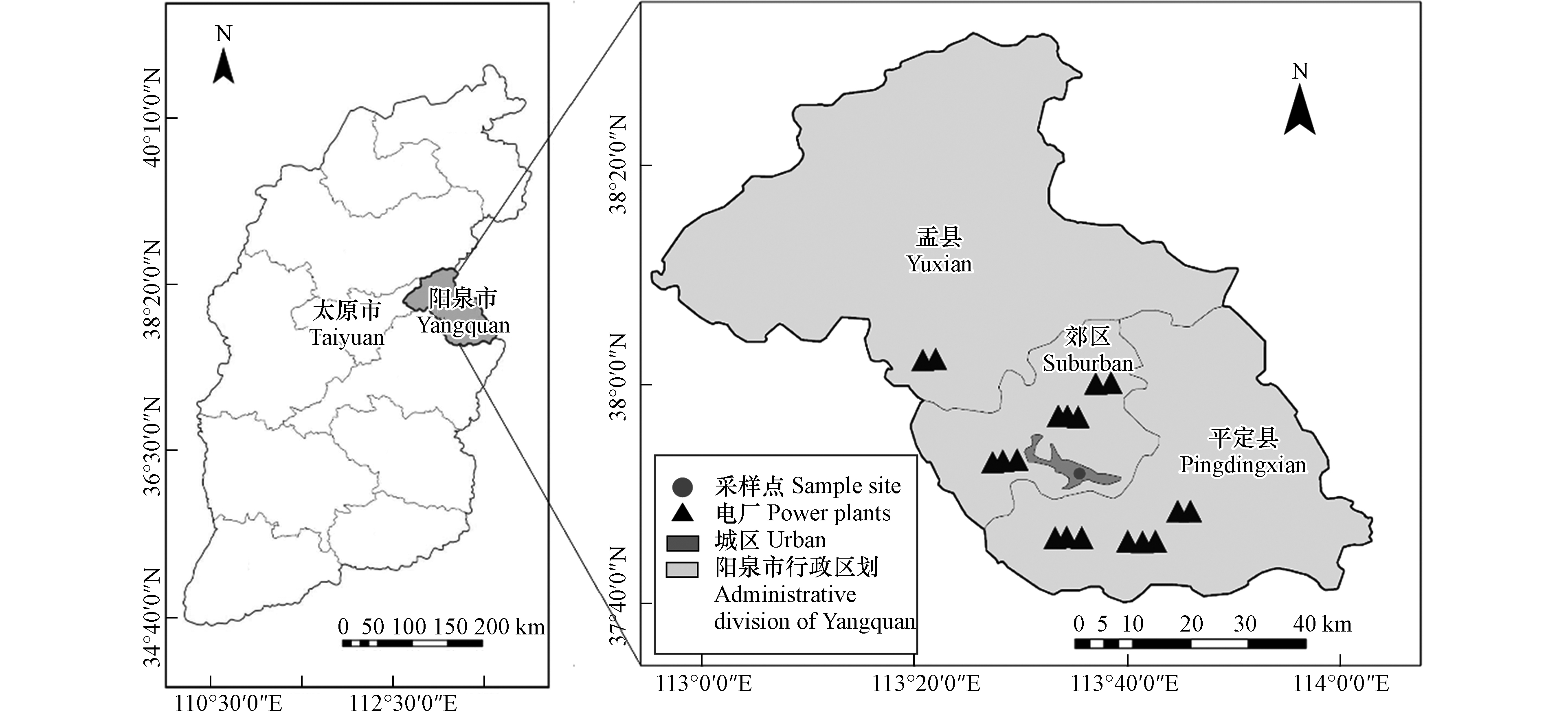
 下载:
下载:

